

 |
 |
|
 |

|
| About Us |
|
Read Past Issues | Resources | Composer Links |
|
MUSIC NEWS
|
John Luther Adams Composes the North
Adams writes like a poet; his words evocating the same spare landscape that he captures in his music:
For all the spirituality evident in his work, Adams clearly has secular concerns that he cares about passionately. Most pronounced of these is the protection of the fragile environment of the North from man and the ravages of global warming. Barry Lopez, author of Arctic Dreams puts it like this: “John Adam's reflections on his music—where it comes from conceptually and geographically, and on the history and nature of his commitment to musical composition—show an unusual awareness of the contemporary world. His thinking is as instructive as it is informative, and his seasoned voice rings here with the sort of integrity and devotion to vision most young artists set their sights on. He sees art as invigorating, resonant, relevant, and—a welcome surprise—civic.” Adams
has released 11 recordings and worked with many prominent performers. He
has taught at the University of Alaska, Bennington College, and the Oberlin
Conservatory of Music. His writings have appeared in numerous periodicals
and anthologies, including The Best Spiritual Writing (2002) and The Book
of Music and Nature (Wesleyan, 2000). The book also includes a CD of Adams
work, including Roar from The Mathematics of Resonant Bodies, Velocities
Crossing in Phase-Space from Strange and Sacred Noise, and Red Arc/Blue
Veil.
Old Stuff An Interview with Tobias Picker Handmaid Tale's Debuts in English Rautavaara Joins B&G Who's Afraid of Julia Wolfe Derek Bermel's Soul Garden The Pianist: The Extraordinary True Story of Wladyslaw Szpilman John Adams' Atomic Opera A Bridge Not Far Enough Turnage Signs With B&H Sophie's Wrong Choice Copland's Mexico On Being Arvo Rzewski Plays Rzewski Praising Lee Hyla David Lang's Passing Measures
|
|||||||||||||||||||||
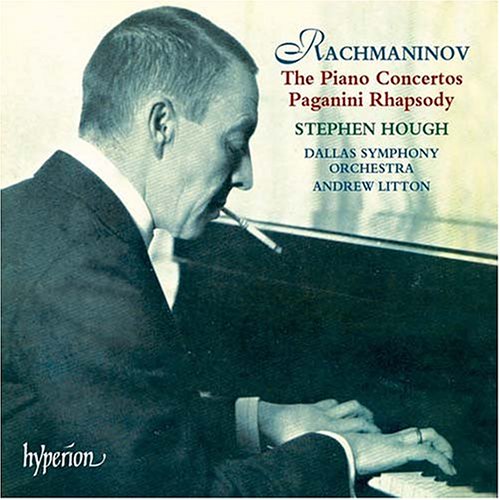
The Piano Concertos, Paganini Rhapsody Composer: Sergei Rachmaninov Stephen Hough (piano), Dallas Symphony Orchestra, Andrew Litton Hyperion You
can find better individual performances of each of Rachmaninov's four
piano concertos (Leif Ove Ondnes's No, 3, for example) but this 2-disk
set is hard to beat as a one-stop listening experience. Cobbled together
from 11 live performances over an 18-day period, the power chord, big sound,
sweeping Rachmaninov romanticism has never sounded, well, bigger or more
romantic. Littton is a Rocky Romantic Show specialist and it
shows in the orchestra's splendid melding with Hough's oversized playing.
Highly recommended, even if you already have them all.
|
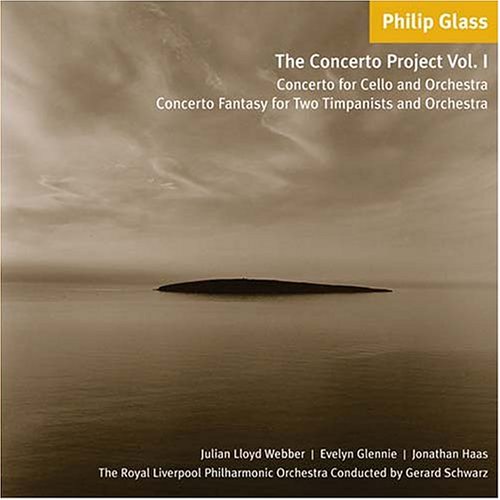
The Concerto Project 1 Composer: Philip Glass Cello Concerto, Concerto Fantasy for Two Timpanists and Orchestra Julian Lloyd Webber (cello), Evelyn Glennie (timpani), Jonathan Haas (timpani), Royal Liverpool Philharmonic Orchestra, Gerard Schwarz Orange Mountain Every
shard of Glass seems to finding its way onto a CD nowadays and it's getting
harder to tell the major Glass from the--forgive me--half Glass.
This is major Glass. The Cello Concerto is a real beauty, played
with real passion by Lloyd Webber and the RLP. The timpani concerto
is great, too, once you get past the thought that maybe Phil borrowed the
opening from Lalo Schifrin. This is the first of a series of four
CDs that Philip Glass and Orange
|
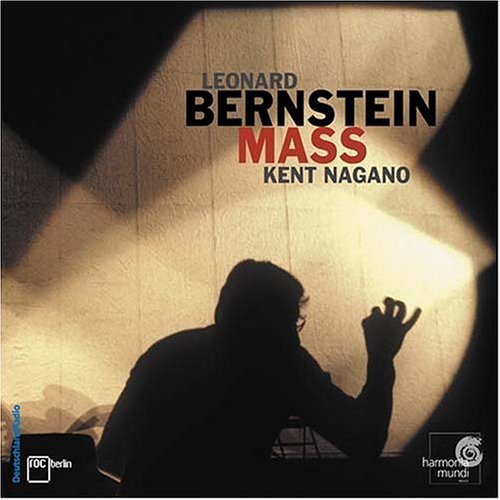
Mass - A Theatre Piece for Singers, Players & Dancers Composer: Leonard Bernstein Jerry Hadley (tenor), Rundfunkchor Berlin, Paci. c Mozart Ensemble, Staats-und Domchor Berlin, Deutsches Symphonie- Orchester Berlin, Kent Nagano harmonia mundi What's
a nice Jewish boy like Leonard Bernstein doing writing a Mass? In
this case, he was invited to do so by Jacqueline Kennedy for the opening
of Kennedy Center in 1971. This is Lennie at his most flamboyant,
employing a big theatrical cast, mixed chorus, children’s choir, dancers
and a rock band. The libretto for Mass intersperses texts written
by Bernstein and Stephen Schwartz (lyricist for Godspell) into the Roman
Mass. The work explores the mass from the point of view of the Celebrant
(sung by Jerry Hadley), who is experiencing a crisis of faith. The Celebrant’s
faith is simple and pure at first, yet that faith gradually becomes unsustainable
under the weight of human misery, corruption, and the trappings of human
power. In the end, the Celebrant, on the verge of renouncing
|
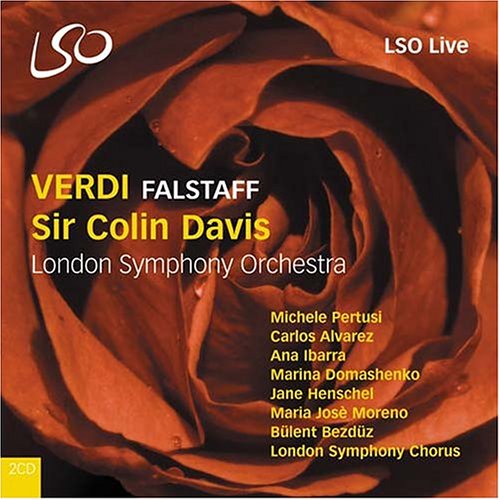
Falstaff Composer: Guiseppe Verdi Michele Pertusi (bass), Carlos Alvarez (tenor), Ana Ibarra (soprano), Marina Domashenko (mezzo-soprano), Jane Henschel (mezzo-soprano), Maria Josè Moreno (mezzo-soprano), Bülent Bezdüz (tenor), London Symphony Orchestra & Chorus, Sir Colin Davis LSO Live Hot
on the heels of their highly acclaimed recording of Britten’s Peter
Grimes, Sir Colin Davis and the London Symphony Orchestra are joined by
a magnificent cast led by Michele Pertusi for a spectacular performance
of Verdi’s comic masterpiece, Falstaff.
|
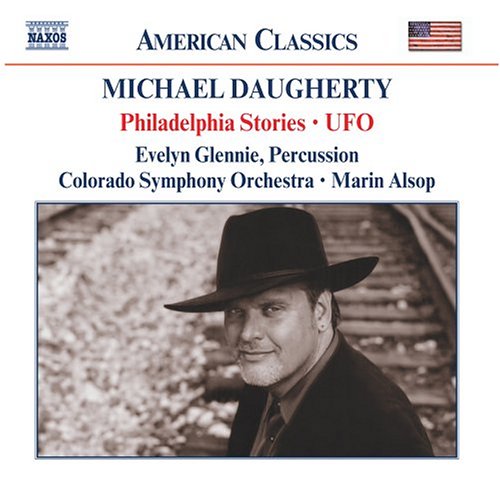
Philadelphia Stories / UFO Composer: Michael Daugherty Performers: Evelyn Glennie, percussion / Colorado Symphony Orchestra / Marin Alsop, conductor Naxos Something
of a coup for Naxos’ American Classics series matching world famous percussionist
Evelyn Glennie with Gramophone Artist of the Year Marin Alsop and the Colorado
Symphony Orchestra with one of America's most intriquing composers.
Daugherty has the uncanny ability to be all things to all listeners without
seeming to comprise either seriousness or an enjoyable listening experience.
|
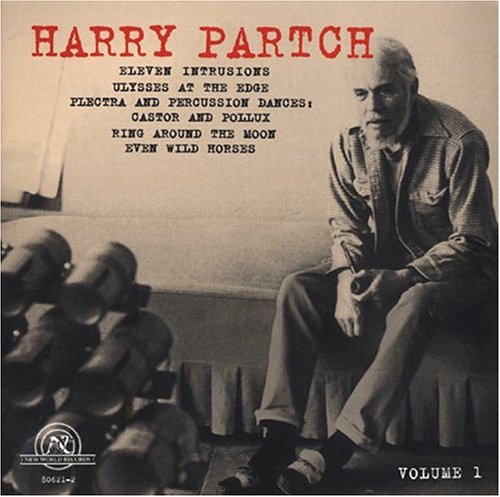
Orchestral Works Composer: Harry Partch Performer: Johnston, Pippin, et al. New World Records These works span the first six years of what American maverick composer Harry Partch (1901–1974) called the "third period" of his creative life. They show him moving away from the obsession with "the intrinsic music of spoken words" that had characterized his earlier output (the vocal works of 1930–33 and 1941–45) and towards an instrumental idiom, predominantly percussive in nature. The Eleven Intrusions are among the most compelling and beautiful of Partch’s works. The individual pieces were composed at various times between August 1949 and December 1950, and only later gathered together as a cycle. Nonetheless they form a unified whole, with a nucleus of eight songs framed by two instrumental preludes and an essentially instrumental postlude. |
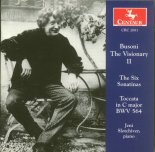
Busoni the Visionary, Volume II Jeni Slotchiver, piano Centaur No one plays Busoni's piano music with greater clarity or depth of understanding than Jeni Slotchiver. As she demonstrated in Volume I of this series, this is music she clearly loves and understands both intellectually and intuitively. There is no finer, or more committed, advocate for this greatly underrated composer working today. See Slotchiver's notes on Busoni the Visionary here. |
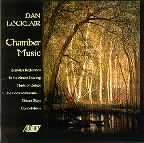
Chamber Works Composer: Dan Locklair Albany Records Dan
Locklair is an organist by trade and although he has written a wide body
of works--his prolific output includes symphonic works, a ballet, an opera
and numerous solo, chamber, vocal and choral compositions--one may be forgiven
for identifying him first with that glorious instrument. These chamber
works show that Locklair's command of musical language is far broader
and deeper than a single instrument. These fresh and engaging
works are musically challenging and yet a real treat for the ear.
|
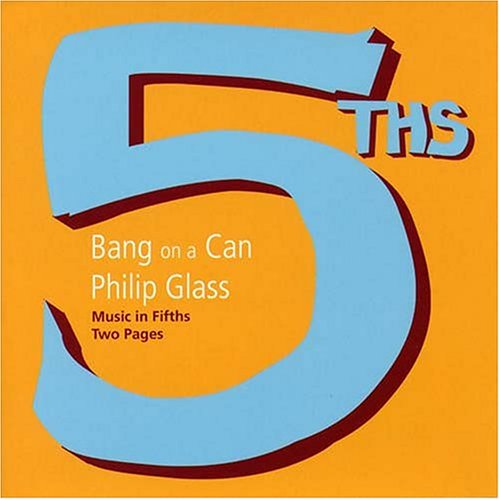
Music in Fifths/Two Pages Composer: Phillip Glass Performer: Bang on a Can Cantaloupe These are transcriptions of two early Glass works ("Fifths," originally performed and recorded by Philip Glass with Jon Gibson and Dickie Landry in the original version for saxophones and electric organ) and ("Two Pages", originally done by Philip Glass on electric organ and Michael Riesman on piano). As always the Bang on a Can All Stars do a... well... bang up job and bring a fresh perspective to two of the seminal works of Glass' early career.
|
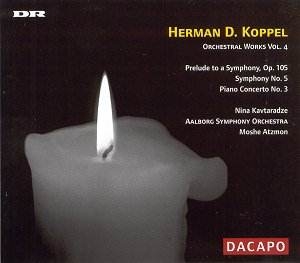
Orchestral Works Composer: Herman D. Koppel Nina Kavtaradze (piano) Aalborg Symphony Orchestra/Moshe Atzmon DACAPO This is the third volume of the symphonies of the Danish composer Herman D Koppel who lived from 1908 to 1998 and wrote seven symphonies between 1930 and 1961. Born in Copenhagen the son of Polish Jewish immigrants, Koppel fled to Sweden during World War II and his Symphony No. 3, written there, is an intensely personal work that mirrors the fears and anxieties of that period. No. 5 is more hopeful and steady but lacks the raw energy of the 3rd. |
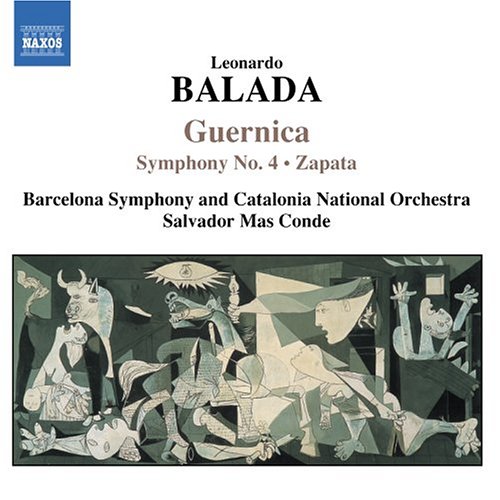
Guernica, Symphony no 4, Zapata Composer: Leonardo Balada Barcelona Symphony and Catalonia National Orchestra/Salvador Mas Conde Balada’s Guernica, completed in 1966, during the height of the Viet Nam War, was inspired by Picasso’s large-scale mural of 1937, which has come to represent a protest piece against all wars. Balada writes in a personal modern idiom, although there are traces of his apprenticeships with Dello Joio and Aaron Copland. Neither a serialist nor neo-classisist Balada is modern in ways that are highly individual and sometimes hard to follow. But, he's an original and a little patience from the listener is well worth the effort. |

Symphonies Nos: 4, 5, 6 Composer: Josef Tal NDR RadioPhilharmonie/Israel Yinon CPO German-born
Israeli composer Josef Tal, whose work I had never heard from this CD,
is said to have derived his musical style from the second Viennese
school and has remained an unrepentant modernist. He has also been an innovator
and pioneer, one of the first to combine a live instrument with a studio-generated
tape recording; he founded the Israel Center for Electronic Music and imported
the first Moog Synthesizer into his adopted country. These three symphonies
reveal a composer with a strong personal voice working at the height of
his powers. Very powerful.
|
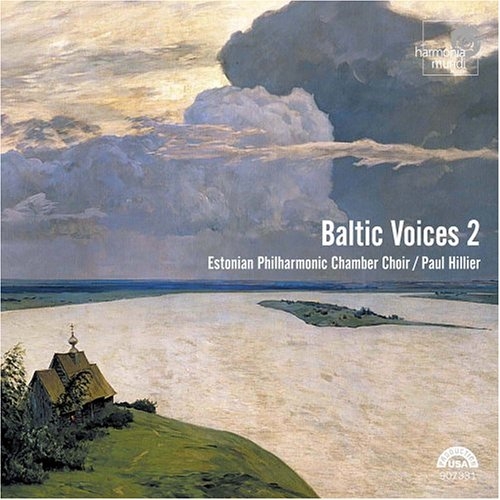
Baltic Voices 2 Performer(s): Estonian Phil Chamber Choir, Paul Hillier Harmonia Mundi The second volume of Paul Hillier's exploration of the choral treasures of the Baltic Sea countries features sacred music from composers representing all three branches of Christianity that are practiced in the Baltic region: Orthodox (Schnittke, Grigorjeva), Catholic (Sisask, Tulev), and Protestant (Nørgård). The Estonian Philharmonic Chamber Choir is in superb form and Hillier's choice of material is impeccable. |

Music from The Hours Composer: Philip Glass Michael Riesman (piano) Orange Mountain Music Piano Transcriptions of music composed by Glass for the Virginia Wolfe-inspired film played by longtime collaborator Michael Riesman. Glass writes great music for the piano as demonstrated by his wonderful Etudes for Piano but stripped of orchestration these pieces seem slight and unfinished. Still, for us fanatics, no scrap of Glass is unwelcome.
|
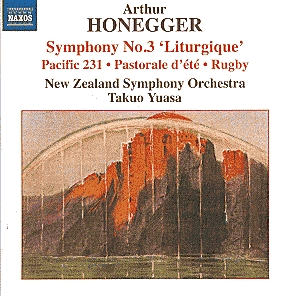
Symphony No. 3 'Liturgique' Pacific 231 Mouvement Symphonique No. 3 Rugby Pastorale d’été Composer: Arthur Honegger New Zealand Symphony Orchestra/Takuo Yuasa Naxos Five of the best pieces by one of the 20th Century's most underrated composers, played handsomely by the New Zealand Symphony. There may be better versions of all these pieces around but at this price you can't go wrong. Essential listening for anyone who is serious about modern music. |
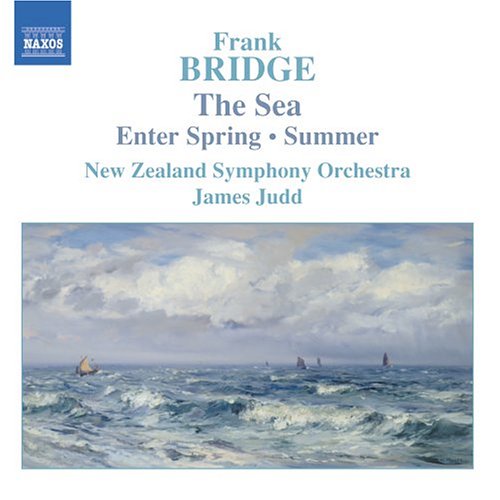
The Sea Composer: Frank Bridge Enter Spring, Summer, Two Poems , The Sea New Zealand Symphony Orchestra/James Judd Naxos Another underrated composer represented by some of his very best work. Young Benjamin Britten once said that upon hearing The Sea he was “knocked sideways”. And, indeed, it is a brilliant piece, filled with the mood of crashing waves and great expanses of open water. Indispensible. |
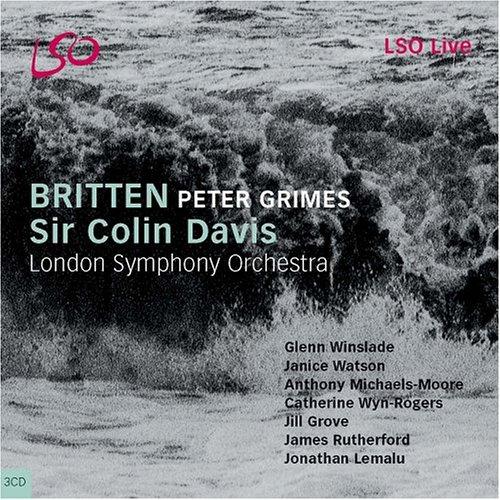
Peter Grimes, Op.33 Composer: Benjamin Britten London Symphony Orchestra and Chorus/Sir Colin Davis LSO Live This is Sir Colin's third recording of Peter Grimes and his experience is clearly reflected in the extraordinary performance by the London Symphony, especially in the famous Interludes that frame Britten's tragic story. This is not the best cast Davis has ever recorded the opera with but the singing is very good, even excellent, in places. (Hard to top Peter Pears and Jon Vickers). But, the orchestra shines in this recording and makes it a must-have for Britten fans. |

Canticle of the Sun, Preludes for Cello Solo, In Croce Composer: Sofia Gubaidulina Pieter Wispelwey (cello), Collegium Vocale Gent, Daniel Reuss Channel Classics Gubaidulina’s Christian mysticism, born of her Russian Orthodox heritage, pervades most of her work but expecially in The Canticle of the Sun, which is based on a text by St. Francis of Assisi. The vocal part is restrained and reverent, with the text often presented in a coloristic and fragmentary manner. Wispelway plumbs the emotional depth of the music as he navigates music that requires not requires a staggering technique but a keen spiritual intensity. Also featured on the disc are Gubaidulina’s solo cello Preludes and In Croce for cello and bajan (Russian chromatic button accordion). |
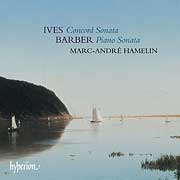
Two American Classics Ives: Concord Sonata Barber: Piano Sonata Marc-André Hamelin (piano) Hyperion The two best piano sonatas ever written by Americans played by the best piano player alive. Period. This is Hamelin's second recording of the Ives Concord Sonata, a piece he has played for over 20 years in performances that have often been regarded as definitive. Now, we have a new definitive recording. |
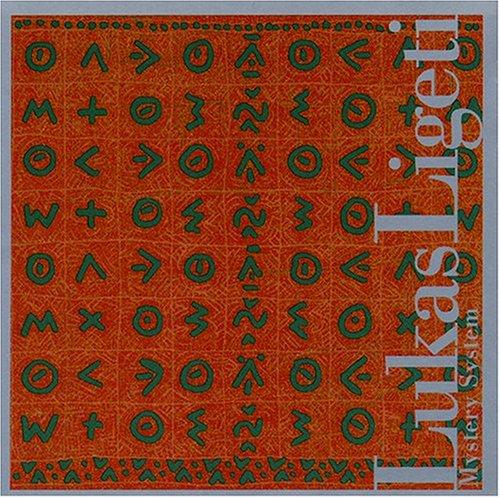
Mystery System Composer: Lukas Ligeti Tzadik With a name like Ligeti you'd better be good and Lukas, son of György, demonstrates that he is more than just a chip off the old block in this clever blending of traditional music from places as diverse as Burkina Faso, Zimbabwe, Florida, Egypt, and the Ivory Coast with the latest techniques in computer and electronic work from Stanford University's computer music lab. Haunting, original and compelling musical ideas that point toward a bright future for contemporary music. |
 |
Search WWWSearch www.sequenza21.com |
